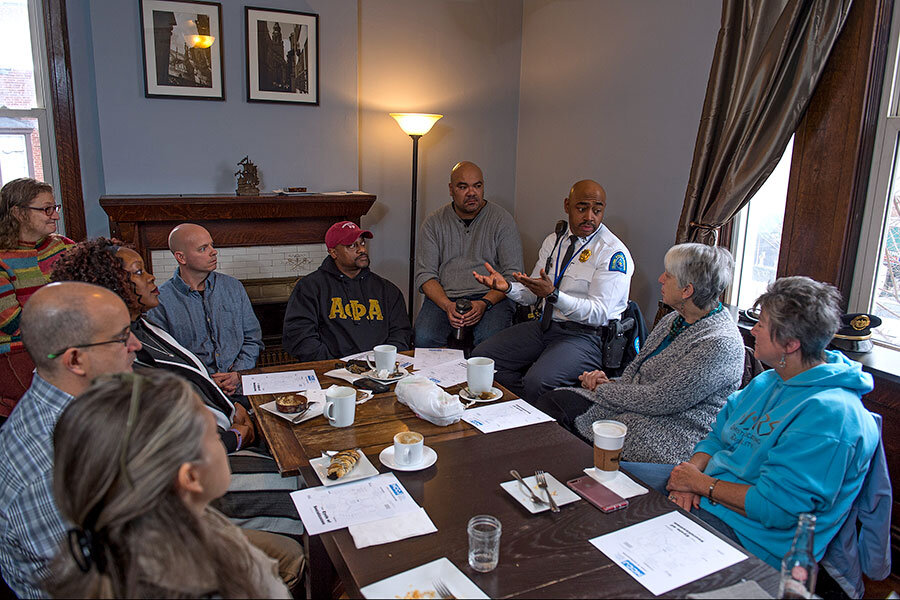The Monitor’s true bias
Loading...
Someone once told me that The Christian Science Monitor’s reputation for unbiased journalism was all wrong. He wasn’t criticizing the Monitor or saying that it was – or should be – partisan about any policy, party, or person. He was saying that there were things on which the Monitor clearly did take sides: for justice, for compassion, for dignity, and for responsibility, just to name a few. Former Monitor editor Marshall Ingwerson summed it up this way: “The Monitor has a bias for progress.”
Christa Case Bryant’s cover story this week is a beautiful example of how that Monitor bias works.
So often, the national conversation after the 2014 killing of Michael Brown by a policeman in Ferguson, Mo., has compelled us to take sides. The views behind Black Lives Matter and Blue Lives Matter are not necessarily in conflict, but they often end up seeming that way. The deep emotions on both sides – so often undergirded by legitimate concerns – can often tempt us to choose teams.
But Christa’s story tells us about Elyssa Sullivan and Charles Lowe, who did something interesting. In some ways, they chose the “other” team. Ms. Sullivan, a white suburbanite, joined Black Lives Matter protests. Mr. Lowe, a black police sergeant, chose to join a police department that, many critics say, still struggles with racism, and which, according to data, is disproportionately white.
Recent elections – from the US presidential election to “Brexit” – have provided powerful evidence that many people are closed into their own bubbles. The traditional word for that is segregation. We usually think about segregation in physical terms when people of different races don’t live together. Demographic studies show that that remains overwhelmingly true in the United States. But recent elections brought to the surface a different kind of segregation – a mental segregation. You could say that Sullivan and Lowe are rebelling against that trend. And you could say the Monitor is biased in support of them.
Time and again, Monitor reporters have found that when people have the courage to break out of narrow assumptions about those on the “other” side – no matter who that “other” is – and engage them with a genuine sense of goodwill, barriers fall. That can be the residents of an Atlanta neighborhood learning to trust the cop next door. Or a dyed-in-the-wool Second Amendment supporter reaching out to gun control advocates to address the suicide rate. Or residents of Greek islands embracing the refugees in their midst.
These stories are not about telling readers what to think. They should not take sides on a policy. Rather, they should at least begin to break down the idea that the sides we often choose are irreconcilable.
Is the Monitor biased toward a sense of unity? Toward a sense that, amid all the diversities of opinions, races, and nations, we can find a common humanity that more strongly binds us? Yes. The Monitor’s mission is “to injure no man, but to bless all mankind.” That can’t leave anyone out.








